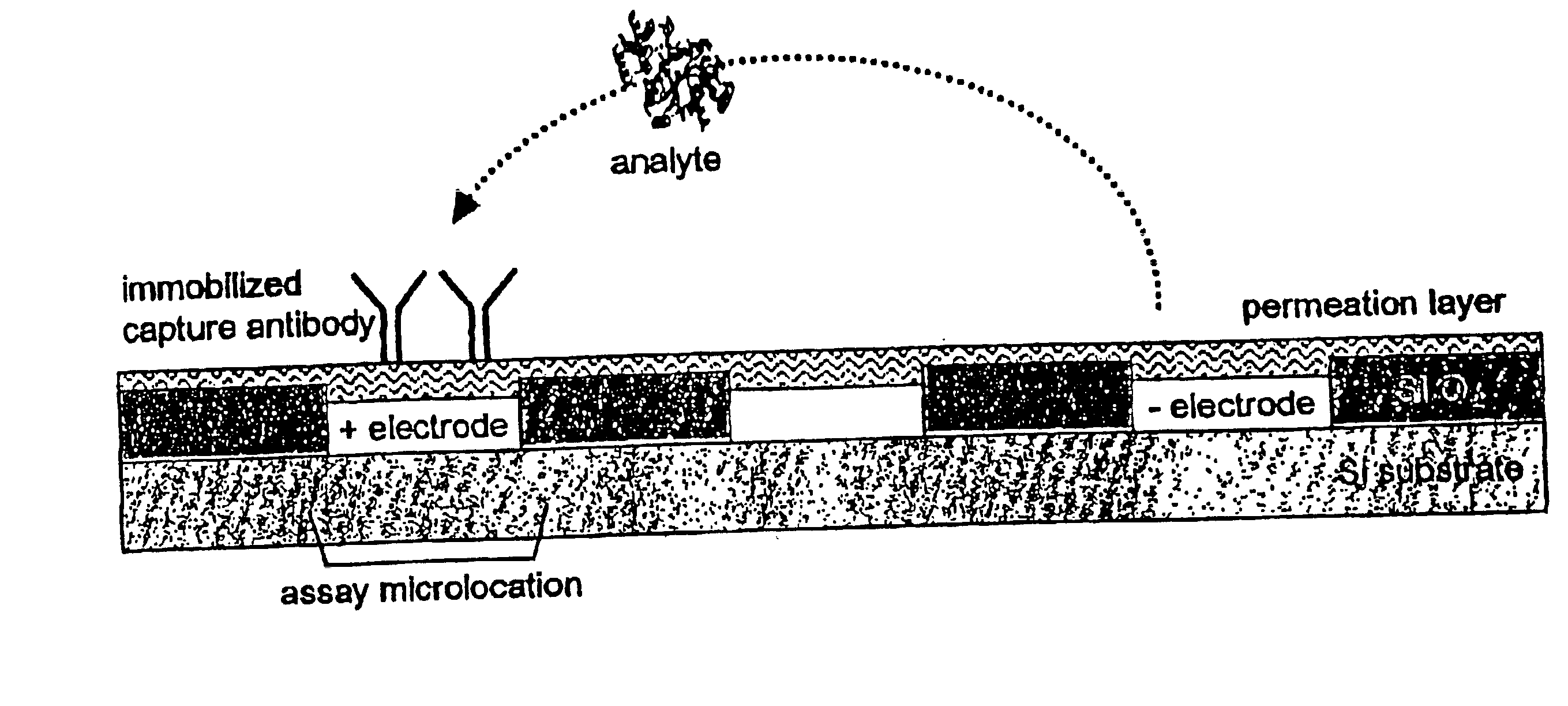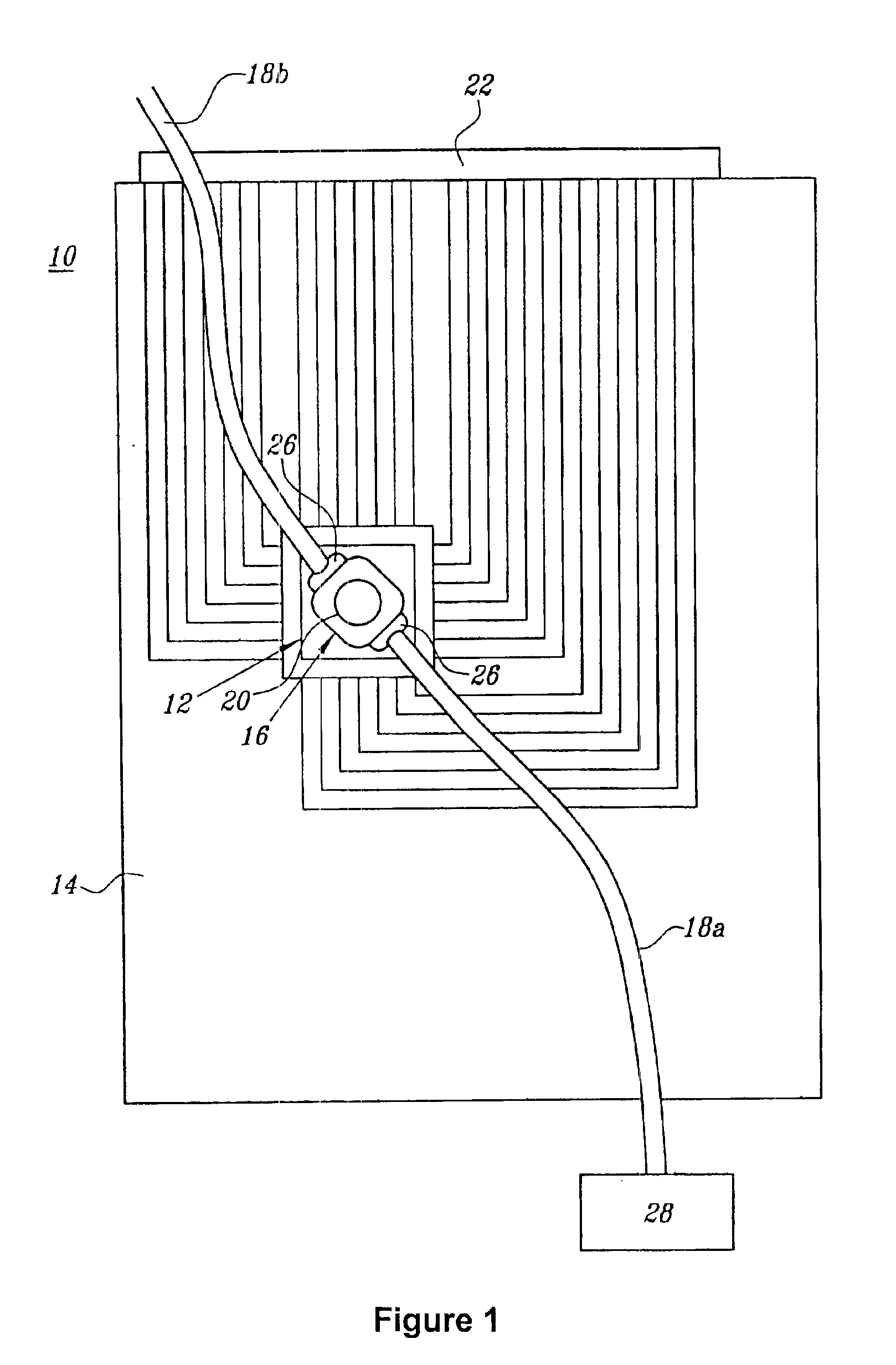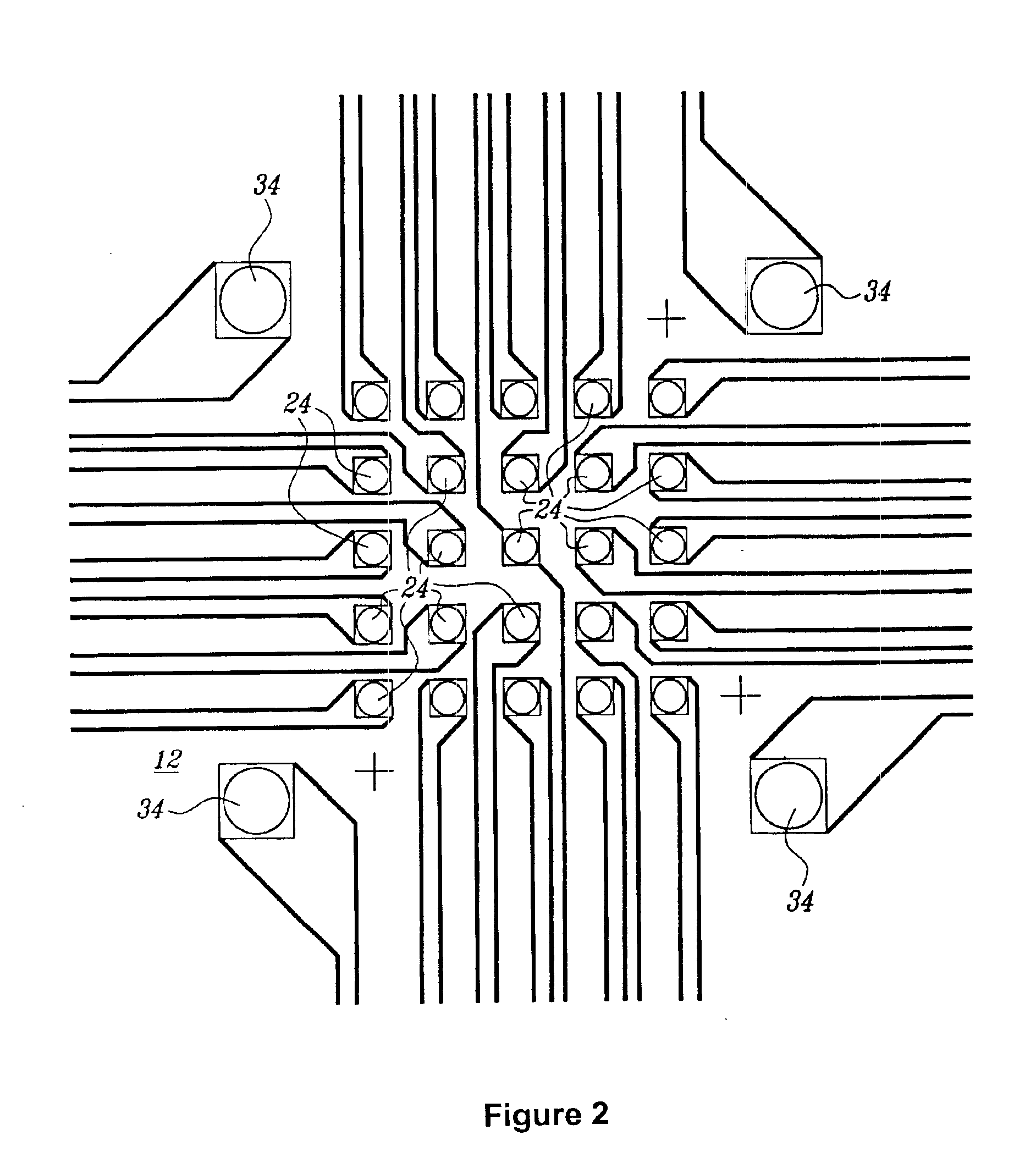Dielectrophoretic separation and immunoassay methods on active electronic matrix devices
an electronic matrix and immunoassay technology, applied in electrostatic separators, diaphragms, electrolysis, etc., can solve the problems of insufficient detection limited application of eps for cell manipulation, and inability to detect eps, so as to reduce the amount of non-specific background binding, improve the efficiency of immunochemical labeling and capture functions, and achieve rapid and efficient
- Summary
- Abstract
- Description
- Claims
- Application Information
AI Technical Summary
Benefits of technology
Problems solved by technology
Method used
Image
Examples
example 1
Active Electronic Matrix Chip Devices Used in the Experiments
[0098]Active electronic matrix chips (like those pictured in FIG. 6), designated as the ‘5×5 array’, were fabricated on silicon wafer using semiconductor processing technique. The 5×5 array chip consisted of 25 circular, platinum electrodes that were 80 μm in diameter on a 200 μm center-to-center spacing and covered an area of 0.88×0.88 mm2, with reference electrodes surrounding the center array. Other areas on the chip were used for the connection pads to external signal sources and for electric wires between 5×5 array to these pads. An approximately 1 μm agarose permeation layer that contained streptavidin was prepared on the 5×5 array chip using a spin-coating technique.
[0099]The chip cartridge was formed by wire binding of the chip to a printed circuit board and was assembled with a flow cell (similar to that pictured in FIG. 1). A polycarbonate molded flow cell and a cover slip were attached to the chip with a UV-cure...
example 2
Immunoassays on Active Electronic Devices for Bacterial Toxin Proteins
2A: Modification and Determination of Isoelectric Points for Antigens to be Assayed
[0101]Staphylococcal enterotoxin B (SEB) and cholera toxin B (CTB), as well as fluorescein labeled CTB, were obtained from Sigma (St. Louis, Mo.). SEB toxin was modified with fluorescein isothiocyanate. The fluorescein labeling of the toxins allowed for direct visualization in a capture immunoassay without adding a secondary detection step. Analyte derivatization (e.g., with a non-specific label such as fluorescein isothiocyanate) has proven practical in other assay contexts, and could be incorporated into a single-device format by utilizing a reaction chamber in between fluidly connected DEP preparation and immunoassay areas of a closed active electronic matrix chip device. Isoelectric points for the modified and unmodified toxins were determined by isoelectric focusing using pH 4-10 NOVEX IEF gels (Invitorgen, Carlsbad, Calif.).
[0...
example 3
Immunochemical Detection of Bacillus globigii Spores
[0113]A single-antibody direct immunoassay was used for B. globigii spores, which consisted of two steps of DC current application: collecting B. globigii spores on the electrodes, and addressing the detecting antibodies to the electrodes. The assay was performed on 5×5 array chips. Bacillus globigii spores (the Biological Defense Research Directorate, Bethesda, Md.) were stocked in Phosphate Buffered Saline (PBS) (pH 7.2) (Life Technologies, Grand Island, N.Y.) at a concentration of 1.4×109 spores / ml. in 50 mM histidine buffer. For the B. globigii assay, polyclonal goat anti-B. globigii antibody (Biological Defense Research Directorate) and polyclonal rabbit anti-Malathion antibody (Fitzgerald Industries International, Concord, Mass.) was labeled in house with Texas Red (TR)-x-succinimidyl ester (Molecular Probes, Eugene, Oreg.), and used as the detecting antibodies.
3A: Electronic Addressing of Spores to Selected Microlocations
[01...
PUM
| Property | Measurement | Unit |
|---|---|---|
| volume | aaaaa | aaaaa |
| volume | aaaaa | aaaaa |
| AC voltage | aaaaa | aaaaa |
Abstract
Description
Claims
Application Information
 Login to View More
Login to View More - R&D
- Intellectual Property
- Life Sciences
- Materials
- Tech Scout
- Unparalleled Data Quality
- Higher Quality Content
- 60% Fewer Hallucinations
Browse by: Latest US Patents, China's latest patents, Technical Efficacy Thesaurus, Application Domain, Technology Topic, Popular Technical Reports.
© 2025 PatSnap. All rights reserved.Legal|Privacy policy|Modern Slavery Act Transparency Statement|Sitemap|About US| Contact US: help@patsnap.com



